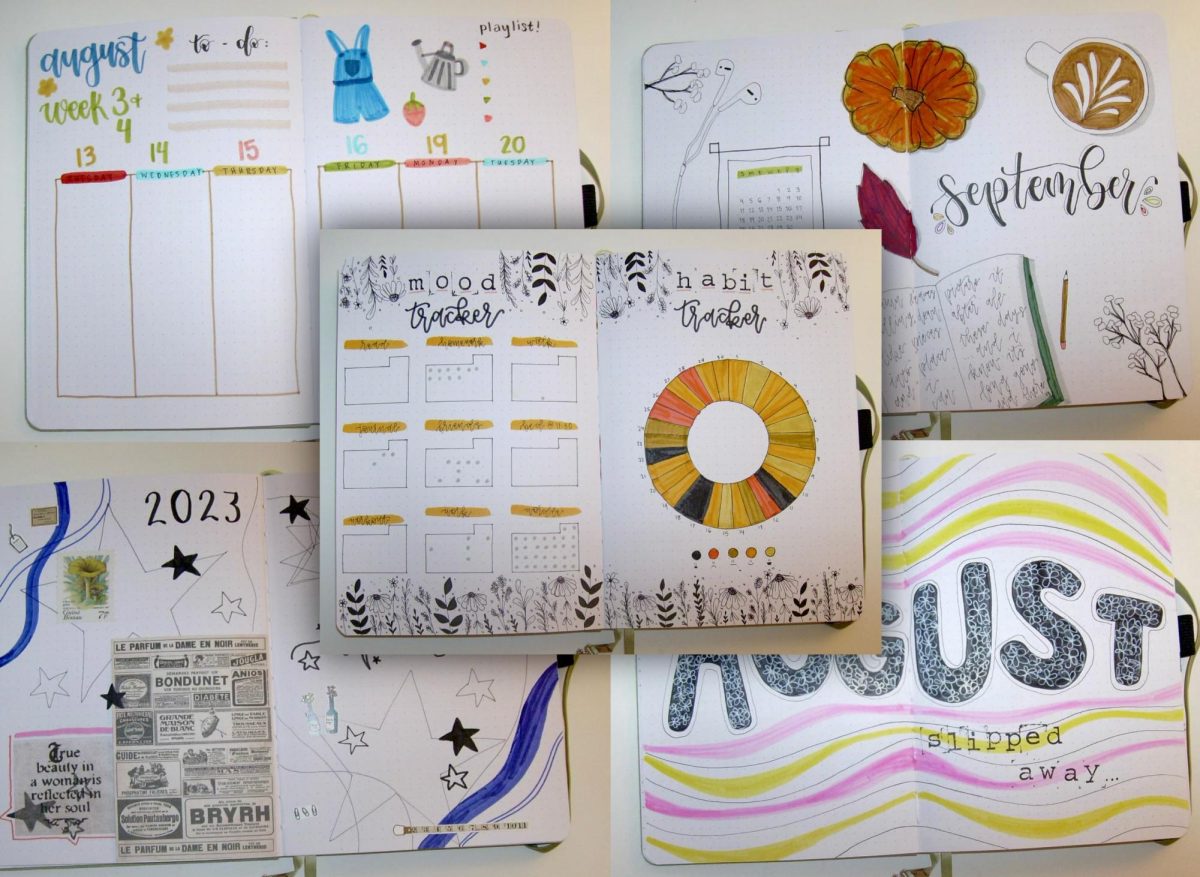Journaling is an excellent way to feel more grounded and creative, providing a personal space for reflection, self-expression and stress relief. With so many journaling styles available, from mood tracking to bullet journaling, everyone can find a method that resonates with their personality and needs.
Whether you’re looking to clear your mind after a hectic day, organize your thoughts or spark creativity, journaling can serve as a valuable tool. This guide will introduce several popular journaling methods and offer tips on how to incorporate them into your routine. By setting aside time for this mindful practice, you can enhance not only your academic performance but also your emotional wellness throughout the semester.
Gratitude journaling
Gratitude journaling, a simple yet powerful tool for improving well-being, is perfect for anyone who has felt like they are stuck in the mundane of daily routines. By regularly noting things you’re thankful for, this practice cultivates a positive mindset and fosters greater mindfulness. It can be as simple as a single word that shares what you appreciate about your day.
Similar to the other types of journaling listed in this article, it can be helpful to set an intention about when you plan to write in your gratitude journal each day, such as right when you wake up or before going to bed. Prioritizing gratitude can help you manifest more good things in your life by shifting your mindset from lack to abundance. Some questions to ask yourself when using this type of journaling include — “What was the best part of my day?”, “What’s something that made me smile today?” and “Who made my day a little bit better?”
Junk journaling
This type of journaling would be great for a sentimentalist or if you’re looking to clear out some drawers. Junk journaling has gained popularity on social media, involving the creation of collages using everyday items you collect, such as receipts, stickers, tickets, ribbons or any flat objects that can be taped or glued into a journal.
It’s a creative way to capture your experiences and interests, turning ordinary “junk” into meaningful memories while avoiding the need to discard those small, sentimental keepsakes. It’s important to play around with layering and texture combinations in a junk journal to maximize the chaos and eclecticism on each page. Don’t be afraid to experiment with junk journaling — the more clutter, the better!
Bullet journaling
If you’re a planner looking to get creative and destress, bullet journaling is for you. Bullet journaling is a fully customizable method of journaling that serves as a create-your-own planner. Done in a journal with dotted pages, bullet journaling involves picking a different theme for each month and drawing your own monthly and weekly calendars.
What makes bullet journaling unique is its adaptability — you can customize it to suit your needs, whether you’re planning studying schedules, setting intentions for the semester or reflecting on personal growth. The possibilities for bullet journal themes are endless. Themes can be based on a color, a season, a plant or an activity.
This type of journaling is all about adding simple doodles and patterns around pages to make your workspace more bright and inviting. Some other page ideas for bullet journals include habit tracker, mood tracker and brain dump pages. This can give you a bigger picture of your goals and plans.
Mood journaling
Mood journaling has become a popular self-care practice anyone can benefit from. Mood journaling is done by recording how you feel each day and reflecting on patterns and changes in mood to gain insight into your mental health. Whether through words, charts or color-coded systems, mood journaling provides a clear visual of your emotional landscape, helping you identify what influences your feelings.
To make it fun, you could create an October themed mood journal by doodling a tree with leaves falling off of it and each day, coloring each leaf in with the color that represents your mood.
Pinterest mood boards
Practicing journaling isn’t limited to physical notebooks — you can also use digital platforms like Pinterest to express yourself and set meaningful intentions. Curating a Pinterest board offers a visually engaging, organized and clutter-free way to plan out your goals, dreams or inspirations for any aspect of your life — from career aspirations and home decor to personal style or travel destinations.
The flexibility of Pinterest allows you to explore a wide range of ideas and refine your vision as it evolves. Using a virtual platform like Pinterest can help you stay organized and maintain a strong sense of direction in both your personal and academic life.
Incorporating journaling into your routine can be a transformative practice, whether you’re seeking emotional clarity, organization or a creative outlet. With so many styles to explore — like bullet journaling, mood tracking or even creating mood boards on Pinterest — there’s a method for everyone. By dedicating just a few minutes each day, you can boost productivity, reduce stress and foster a greater sense of mindfulness throughout the semester.
No matter which approach you choose, journaling offers a simple yet powerful way to enhance your overall well-being and stay grounded in both your academic and personal life. Remember — journaling has no rules and can be modified to fit any lifestyle.



